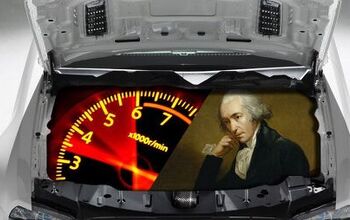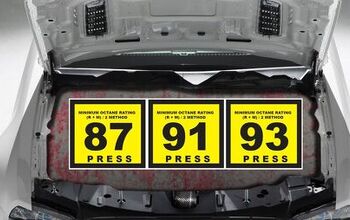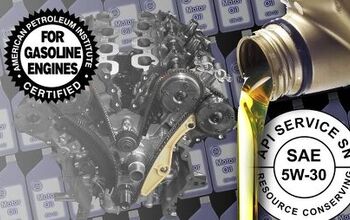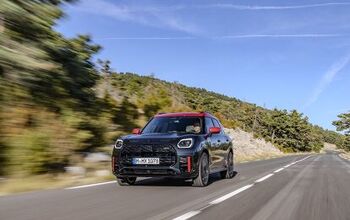Under the Hood: What is Carbon Fiber?

Dietary fiber is good for the body. Among its many benefits, plant-based roughage speeds digestion, helps stave off hunger and can even lower cholesterol levels. Doctors are always urging their patients to eat more of the stuff.
Likewise Ph.D.-level engineers at automakers and supplier companies are driving to put next-generation vehicles on similar high-fiber diets, but instead of lima beans and whole grains they’re prescribing carbon-reinforced polymers. These pricey plastics will play a key role in the car business going forward, but what are they and how come they aren’t more widely used today?
At its most basic level carbon fiber is all about cutting mass. “It’s light-weighting; we’re selling lightweight structure,” said James Staargaard, President of Plasan Carbon Composites. But just because this substance is wispy doesn’t mean it’s not tough. According to Staargaard “Carbon fiber has the highest strength-to-weight ratio of any material.” With that unbeatable combination it’s easy to understand why so many people in the car business – and other industries – are interested in it.
Bringing to mind hippies and flower power Plasan is actually an industrial collective with agricultural roots. Staargaard said, “We are owned by an Israeli armor manufacturer.” In Hebrew this peculiar sounding corporate arrangement is known as a kibbutz. According to Staargaard, “They morphed into manufacturing back in the late ‘80s [and then] grew astronomically over the last decade.” Interestingly the U.S. military is their largest customer.
Plasan’s expertise is in the field of carbon composites, something that’s made them popular with the armed forces. Increasingly though automakers are turning to them for their know-how. Plasan parts have found their way into cars like the Corvette ZR1, Viper ACR and Ford Shelby GT500 KR.
Carbon fiber is a material that’s both strong and lightweight, but fundamentally what is it? The building block of this stuff is called polyacrylonitrile, essentially a very pure kind of plastic. Staargaard mentioned the material is spun into a thin fiber and then it’s heat-treated in an oxidation and carbonization process. Essentially it gets baked at very high temperatures, anywhere from 1,500 to 2,000 degrees, which converts the polymer into a very pure carbon thread, a “carbon chain” as he called it.
According to Staargaard the process is “very energy intensive… you lose a lot of mass.” He also said “Your yield is a fraction of your start; that’s why it’s expensive.”
After the polyacrylonitrile strands have been baked they get spun into larger threads and ultimately woven into fabric. After that the carbon-fiber cloth gets layered into a mold, slathered with a special kind of resin and baked in an oven for an hour and a half or more to set the resin. Once that’s done so is the part.
SEE ALSO: BMW to Increase Carbon Fiber in Production Vehicles
That long baking time in the autoclave is another major reason why carbon-fiber parts are so expensive; they take forever to produce. But companies are tackling the problem. “What we’ve done at Plasan is lower the cycle time,” Staargaard said. They’ve developed a patented process that uses a heated press to cure the resin. This dramatically cuts the baking time from a lengthy 90 minutes to about 17, but it could be even quicker. “Basically we’re limited by the chemistry for the resin,” he noted. The ones they’re using today simply don’t cure fast enough.
Plasan manufactures the hood and fender assembly for Chrysler’s new high-performance SRT Viper. This huge part saves a significant amount of mass compared to traditional materials; rendered in carbon fiber it only weighs 38 pounds! For a little perspective Staargaard mentioned it would clock in “around 100 pounds in steel, probably 70 in aluminum.” All together the Viper has “a fair amount of carbon fiber” he said facetiously, with about 65 pounds of the stuff. That means it has the highest carbon content of any production vehicle in the world. Best of all, the Viper’s parts are manufactured right here in the good ol’ US of A at the company’s facility in Bennington, Vermont.
“We understand how to do class-A panels very well,” said Staargaard, and going forward “I wouldn’t’ be surprised to see it [carbon fiber] proliferate through the luxury cars.”

Born and raised in metro Detroit, Craig was steeped in mechanics from childhood. He feels as much at home with a wrench or welding gun in his hand as he does behind the wheel or in front of a camera. Putting his Bachelor's Degree in Journalism to good use, he's always pumping out videos, reviews, and features for AutoGuide.com. When the workday is over, he can be found out driving his fully restored 1936 Ford V8 sedan. Craig has covered the automotive industry full time for more than 10 years and is a member of the Automotive Press Association (APA) and Midwest Automotive Media Association (MAMA).
More by Craig Cole





































Comments
Join the conversation